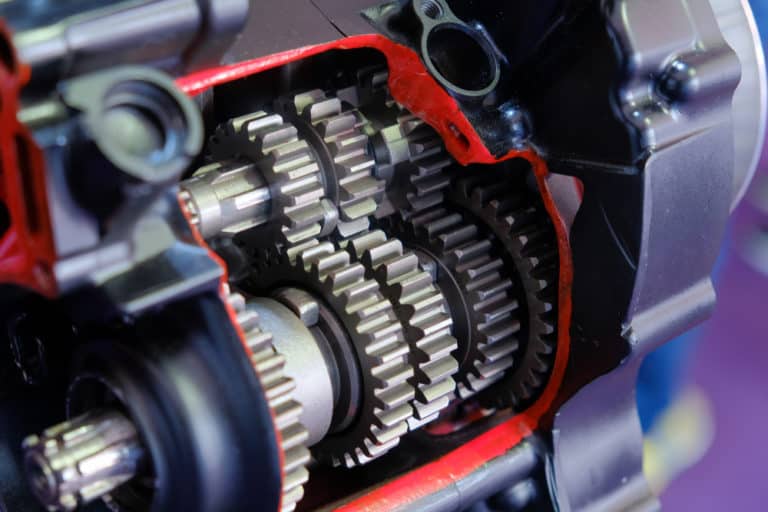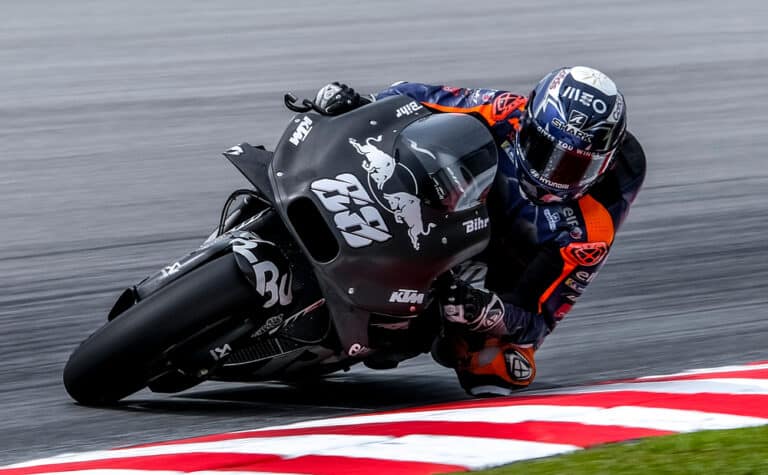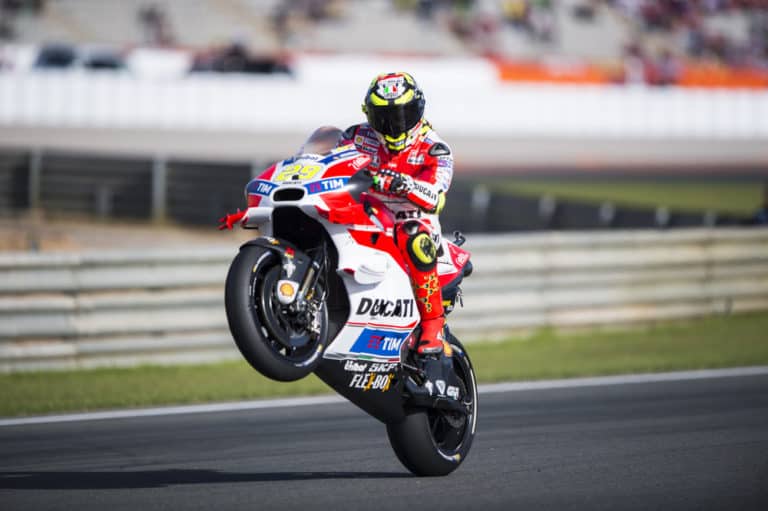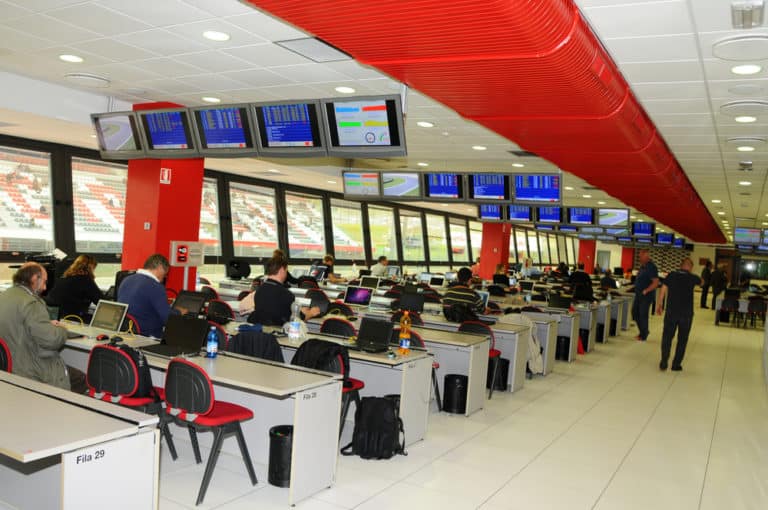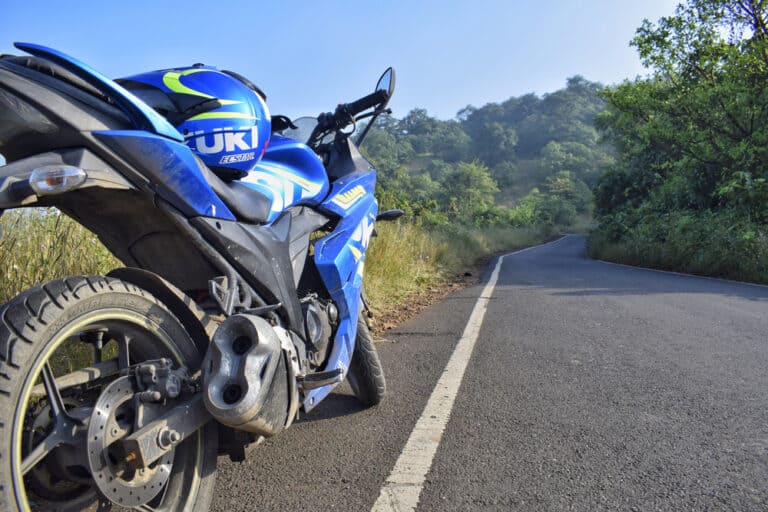Editorial credit: mohd farid / Shutterstock.com
The MotoGP is one of the most exciting sports, whether at the racetrack or remotely from home. Twenty-four state-of-the-art bikes chasing each other around the track at well over 200 miles per hour is enough to get even the fans’ hearts racing. Many fans have wondered, though, just how dangerous MotoGP racing is.
Like in any motorsport, accidents will happen, and the risks are significant when accidents happen at speeds exceeding 200 miles per hour. MotoGP accidents could lead to severe injury or even be fatal, despite the long list of safety measures employed by MotoGP teams.
Over the last decade, the number of severe injuries and fatalities due to MotoGP crashes has decreased significantly. This decrease in fatalities can partially be attributed to improved safety measures employed in MotoGP, many of which have been implemented by the Federation Internationale de Motocyclisme (FIM), the governing body of MotoGP, and are compulsory.
Just How Dangerous is MotoGP?
Over the last decade, from 2012 – 2021, 2394 crashes occurred in MotoGP alone, excluding Moto2 and Moto3 crashes. That is an average of 13.5 crashes per event over the 178 events that took place over the last decade. Surprisingly, very few crashes lead to serious injury, and no fatal crashes have been recorded in MotoGP since 2011, although there were two fatalities in other classes.
Since the MotoGP’s inception in 1949, 87 fatal crashes occurred over all three classes, with only 30 fatalities reported in the MotoGP class (previously known as the 500cc class) in the same period. The number of fatalities has decreased significantly over the years. Only five fatal crashes have occurred since the turn of the century, 2 in MotoGP, 2 in Moto2, and only 1 in Moto3.
The reality is that every time a MotoGP rider goes out on the track, there is a realistic possibility that he may crash, may suffer a severe injury, or even die. Although the odds of serious injury or death are low, it could still happen, as many riders who suffered career-ending injuries in races can attest.
Why Don’t MotoGP Riders Suffer More Serious Injuries?
If there is an average of 13.5 crashes per MotoGP event, and one considers that most of these crashes would happen at speeds of close to or exceeding 200 miles per hour, one would wonder why the riders don’t suffer more severe injuries. Several factors contribute, including the riders’ conditioning, the safety equipment, the weather, and the nature of the sport.
All MotoGP riders are professional athletes who train to ensure they are in peak physical condition. As crashing at high speed is a reality in MotoGP, riders don’t only need to withstand the pressure the rapid acceleration of their bikes exerts on their bodies but also to withstand the impact of a crash. Riders also train to handle crashes to decrease the risk of serious injury.
A MotoGP rider’s mental health I also of utmost importance. Every rider takes his own life and the lives of every other rider on the track in his hands every time he races. Riders must act responsibly, stay alert, and be able to think and act quickly for the whole duration of the race. Being properly focused is paramount to ensuring every rider’s safety on the track.
What Equipment Ensures A MotoGP Rider’s Safety?
Every MotoGP rider wears protective gear to reduce the risk of serious injury in the event of a crash. Unfortunately, crashes will happen, regardless of how good the rider is and how brilliant the bike’s design is. At speeds higher than 200 miles per hour, even a minor accident could have catastrophic consequences for all involved or even be fatal. All riders will use the following protective gear:
- The Racing Suit – The racing suit is custom designed to fit each rider perfectly. The materials used in the racing suit offer the rider the highest possible level of protection. The racing suit also includes armor in vital areas, like the shoulders, elbows, hips, and knees, to offer the rider extra protection and distribute the force of impact.
- The Airbag – Since 2018, using an airbag has become compulsory in MotoGP. The airbag is worn under the racing suit and covers the rider’s shoulders, back, and ribcage. Sensors are present to detect when the rider falls and deploy the airbag in milliseconds, so it would absorb the impact of the fall and reduce the impact on the rider’s body.
- The Back Protector – The back protector aims to reduce the impact of a crash on the rider’s back and to protect the spine, reducing the risk of spinal injuries during a crash. Back projectors are usually made of aluminum and worn under the racing suit, often as a single vest-type unit that also incorporate the airbag and chest protector.
- The Chest Protector – The use of chest protectors in MotoGP is mandatory. These protectors can be made of different materials, ranging from aluminum to more flexible materials, but the minimum coverage is 35.6 square inches. Riders wear this under the racing suit, and its purpose is to absorb impact and reduce the risk of chest injuries.
- The Helmet – Helmets used in the MotoGP must adhere to the highest safety standards and pass a series of stringent tests required by the FIM. A helmet’s design reduces the risk of head or brain injury in the case of a crash. The focus is not only on the design of the outer shell but also on the inner padding and the visor.
- The Gloves – Often overlooked, the gloves are vital to protect a rider’s hands. Gloves are made from the same leather used in racing suits and include protective armor in the palm, around the wrist, and over the knuckles. The leather on the palm side of the fingers is thinner so the rider can still properly feel the brake lever, which is vitally important.
- The Boots – The design of the racing boots provides optimal protection, especially for the ankle and heel areas, and reduces the risk of fractures. They consist of an inner and outer boot, each providing its protection and support. The sole of the boots should be thin enough to enable the rider to feel the foot pegs and brake lever while racing.
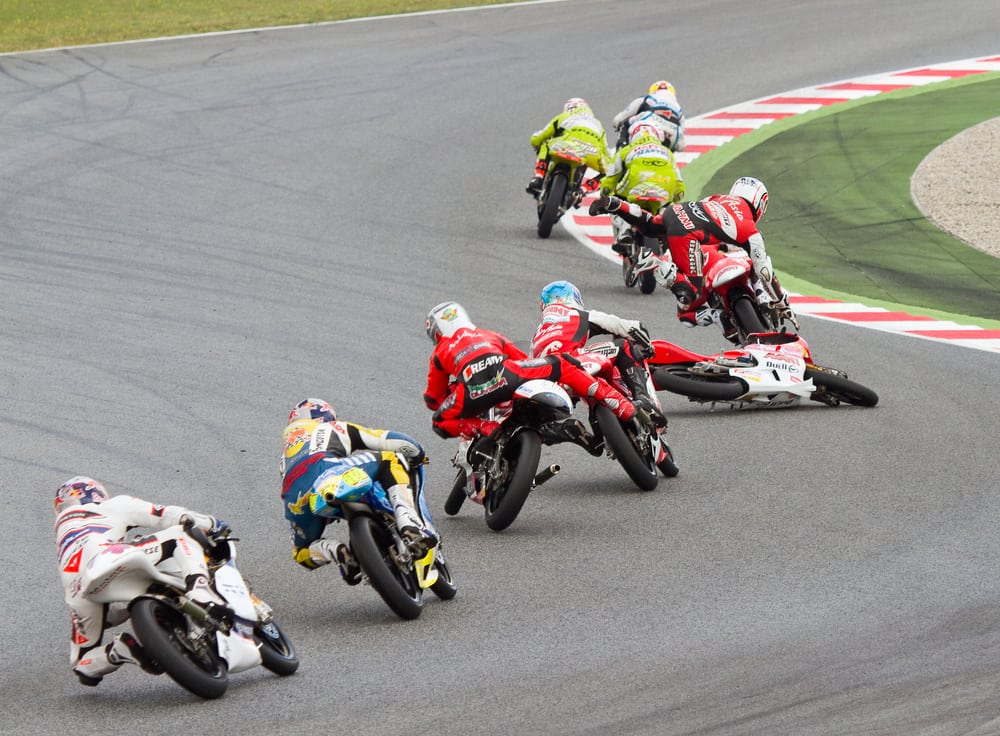
Conclusion
MotoGP is a hazardous sport, and a crash can be catastrophic at speeds of over 200 miles per hour. However, by taking the necessary precautions, ensuring the top physical condition of the riders, and using the array of safety equipment available, teams mitigate the risks to the point where severe injuries and fatal deaths have become a rarity in the sport.
References
- https://en.wikipedia.org/wiki/Rider_deaths_in_motorcycle_racing
- https://www.redbull.com/za-en/theredbulletin/how-to-survive-a-motogp-crash
- https://www.autosport.com/motogp/news/safety-devices-in-motogp-airbags-helmets-boots/6438518/?nrt=112
- https://www.youtube.com/watch?v=amnd0FxNyqU
- https://www.boxrepsol.com/en/motogp-en/motogp-armour-maximum-protection-for-motogp-riders/
- https://www.motogp.com/en/news/2021/11/26/2021-motogp-falls-report/403233
- https://www.sciencedirect.com/science/article/abs/pii/S0976566221002289

